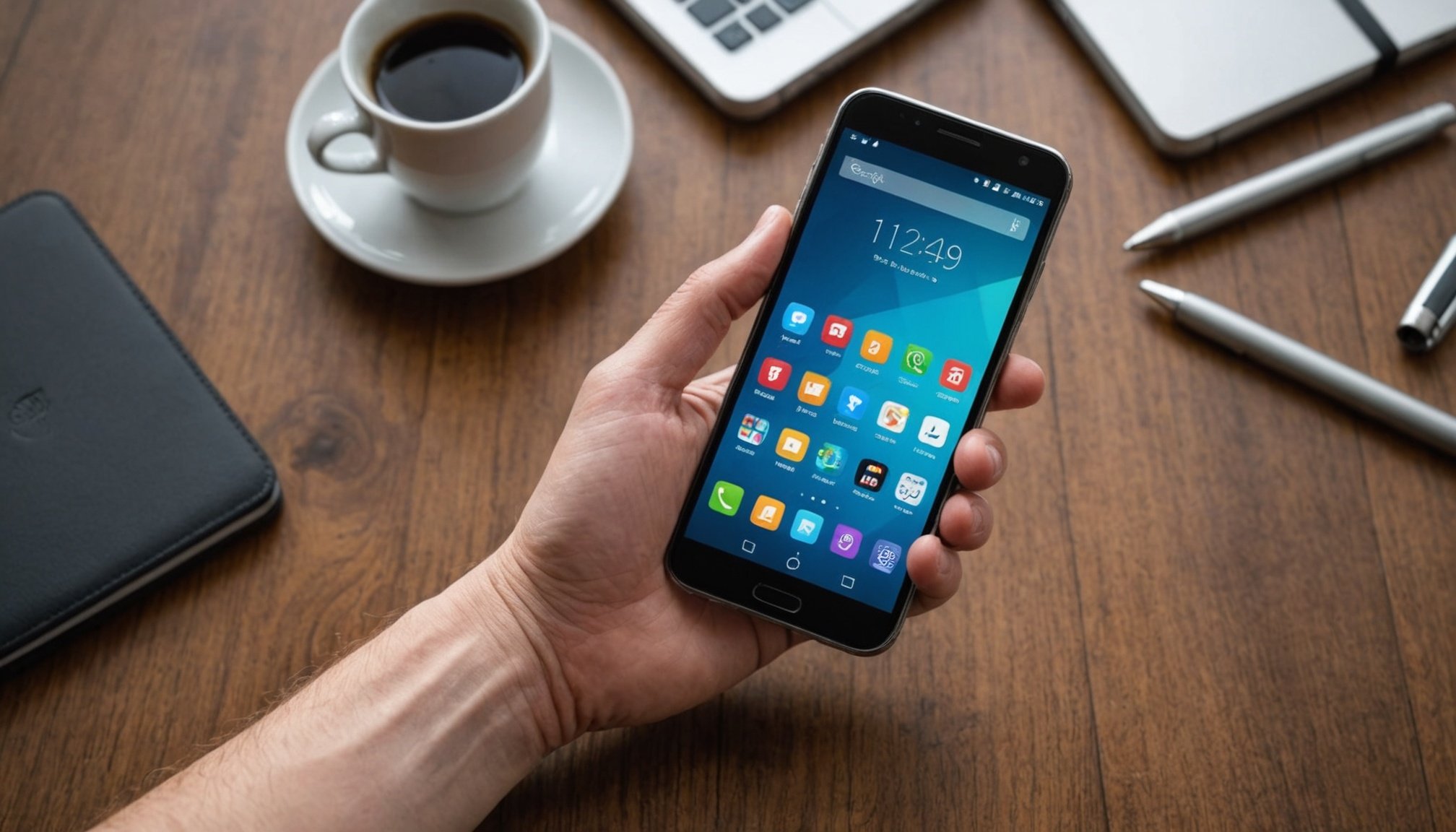Performance Issues
Experiencing smartphone performance problems, such as lagging and slow response times, can be quite frustrating. These issues often surface when applications take longer to launch or when navigation between different tasks becomes sluggish. The lag signifies that the device’s processor, memory, or storage might be struggling to keep up with current demands.
A frequent cause of sluggish performance is often linked to software updates. While these updates are vital for incorporating new features or security patches, they might also consume more resources than previous software versions, leading to performance dips in older devices. Comparing performance metrics of newly released smartphones often highlights substantial gains in processing speeds and efficiency, which result in smoother operation and quick app launches.
Also read : Exploring smartphone addiction: impact and effective management strategies
For instance, new devices might showcase improved RAM capabilities, allowing more applications to run simultaneously without impacting performance. This is especially noticeable when multitasking or using resource-intensive applications. Meanwhile, older models might not handle such tasks as fluently, illustrating the differential impacts on smartphone performance.
To address these issues on older devices, it might be beneficial to regularly review and manage storage, such as clearing cache or uninstalling rarely used apps, to help regain some responsiveness. Additionally, examining and adjusting settings to limit background processes can mitigate some performance concerns.
In the same genre : Essential tips to shield your smartphone screen from scratches and cracks
Outdated Features
In the ever-evolving world of smartphones, having up-to-date smartphone features is critical for enhancing the overall user experience. As new technology emerges, older devices might lack essential features, causing them to fall behind. Recognizing when your device is outdated requires evaluating whether it supports current needs and conveniences.
A key area where advancements are remarkable is in camera quality. The latest technology offers improved sensors, better low-light performance, and enhanced zoom abilities, elevating the photography experience. If your existing smartphone’s camera quality feels inadequate, it may be a sign it’s time to upgrade.
Another vital aspect to consider is battery technology. Newer models feature improved battery life and faster charging capabilities, which are crucial for users reliant on their devices throughout the day. Diminished battery performance might imply that your current device is lagging in terms of new technology standards.
Additionally, assessing a smartphone’s compatibility with new apps and services can highlight an obsolescence issue. Many modern apps demand advanced processing power and storage capacity to function optimally. If your device struggles with app compatibility, the limitations of its smartphone features become apparent and could necessitate a change.
Lack of Software Updates
In the rapidly advancing world of smartphones, receiving regular software updates is crucial for maintaining optimal performance and security. These updates provide essential patches not only to fix bugs but also to protect against vulnerabilities, ensuring your device remains secure. Operating system support plays a significant role in keeping your device updated. When manufacturers cease support, your device becomes susceptible to security risks, as it no longer receives these invaluable updates.
Understanding the consequences of using outdated operating systems helps underscore the importance of timely updates. Without the latest security patches, your smartphone’s data integrity could be compromised, posing risks to user experience and personal information. Research on manufacturer support lifetimes reveals that support for software updates typically lasts for a fixed period, often three to five years, post-release.
Without regular updates, new technology advancements become inaccessible, further reducing device functionality. Performing a smartphone performance check can help gauge the need for upgrades or replacements due to lack of software support. Checking regularly if your device’s manufacturer continues to provide updates is essential for deciding whether to keep using an older model or opt for a newer device to ensure safe and reliable operation.
Battery Life Decline
In the lifespan of a smartphone, maintaining optimal battery health is crucial for ensuring smartphone longevity. Over time, the natural depletion of battery capacity becomes apparent. Users may notice more frequent recharging requirements or a rapid drop in power levels after modest usage. These signs should prompt examination into the device’s battery condition.
Indicators of Battery Wear
Recognizing deteriorating battery performance is key to addressing longevity. Devices that need consistent recharging post minor use indicate possible health degradation. Additionally, unexplained shutdowns even at seemingly sufficient battery levels highlight potential issues.
Testing and Evaluating Battery Health
Various techniques exist to test battery viability. Built-in diagnostic apps or third-party tools can analyze recharge cycles and overall capacity. iOS and Android platforms often feature settings to monitor battery health, alerting users to potential inefficiencies.
Replacement or Upgrade?
Faced with these challenges, users must decide between battery replacement or acquiring a new device. While replacing the battery might extend life temporarily, it’s critical to consider whether investing in a new smartphone could provide increased performance and efficiency. Evaluating the cost-effectiveness of these options ultimately depends on individual user needs and smartphone longevity objectives.
Increased Repair Costs
Repairing smartphones can quickly become a costly affair, impacting the overall device longevity. Analyzing repair costs in contrast to the price of acquiring a new smartphone is essential for making financially sound decisions. When considering a repair, it’s crucial to assess whether the price justifies the potential benefits compared to a brand-new device, which usually comes with a warranty.
Common repairs include screen replacements, battery changes, and port fixations. Frequent repairs are a clear indicator of an aging device, often leading to higher cumulative expenses over time. For instance, a cracked screen may require a pricey replacement, and if this happens multiple times, it may not be economically viable to continue fixing the old device.
Interestingly, testimonials shed light on the cost-effectiveness of upgrading versus repairing. Many users find that investing in a completely new smartphone provides enhanced replacement value, such as improved features, reliability, and often better security standards. Upgrading can also save money in the long run by negating the need for continuous repairs and offering the latest technology advantages, which contribute to longer device longevity. Making informed decisions requires a careful evaluation of both immediate and future costs.
Tips for Selecting a New Smartphone
Choosing a new smartphone involves various key considerations to ensure the selection matches your needs and enhances your user experience. A comprehensive buying guide can assist in this process by highlighting critical factors such as performance, features, and value for money.
Begin by assessing your current needs and determining which smartphone features are most important for you, whether it’s an advanced camera system, long-lasting battery, or a robust operating system. This evaluation helps narrow down the options available.
Researching models thoroughly is crucial. Look into how a smartphone’s specifications align with your preferences. Consider aspects like the processor’s speed, the storage capacity, and compatibility with new apps and services. Additionally, ensure the device supports timely software updates to maintain security and functionality.
It’s also beneficial to compare user reviews, which offer insights into real-world usage and reliability. These reviews can reveal potential longevity issues or highlight standout features that make a device worthwhile.
Lastly, understanding the repair costs associated with certain smartphones can be valuable. Avoid models notorious for frequent repairs, ensuring your investment leads to fewer long-term expenses and enhanced replacement value. A well-informed decision promises a satisfying and sustainable smartphone experience.











